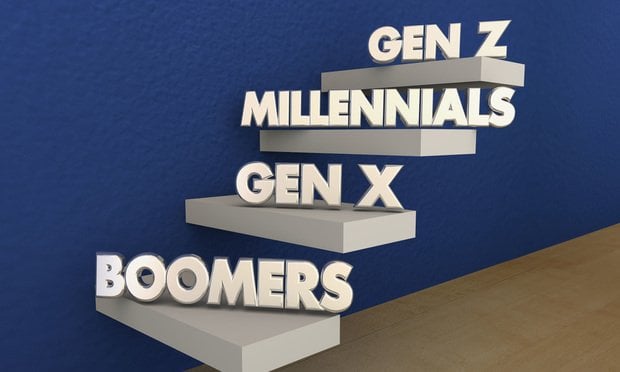When we have asked what employees value most in their employer’swell-being program, the top responses are always stronglylinked to company culture and support from leadership toparticipate.
|Our most recent findings have further confirmed employees arepersuaded by genuineness in a workplace culture that fully embraceswell-being and finds ways to make it easier tobuild healthy habits both at work and at home.
|In fact, among the employees who do not currently participate intheir employers’ well-being offerings, more than half choose not todue to at least one culture-related barrier, including lack of timeto participate, inconvenience, and no perceived employersupport.
|Fortunately, the research also shows a great opportunity forleaders at all organizational levels to help activate employeewell-being — and while employees say support has improved over thelast three years, there is still room to grow.
|According to the 2016 Consumer Health Mindset Report, 44 percentof employees believe their employer is extremely or very supportivein getting and keeping them healthy, and more than one-third (37percent) feel the same about their direct manager or departmenthead. A key missing ingredient for success? Top-level leadershipsupport.
|Related: Support from management increases employeewell-being
|At HealthFitness, we’ve learned visible support from executiveshelps create a supportive company culture and sets the tone foremployees — communicating it’s acceptable to fit in a workoutduring the workday, participate in a weight loss challenge withco-workers, or take advantage of healthy food options.
|For example, when one client with an onsite corporate fitnesscenter was struggling with engagement and participation for itswell-being program, we created a focus group of employees tounderstand why. When employees were interviewed, they sharedbeing afraid to be perceived as a slacker if they were seen usingthe facilities during the workday.
|Our staff helped change this perception by recruiting C-suiteleadership to work out while on the clock, opening the door forother employees to recognize that health was a genuine prioritythroughout the company.
|Employees trust the behavior, not just the words, of seniorleadership — which is why they must be leading the charge asvisible contributors to the culture of health, sharing informationand setting an example of participation in programs and specialevents held by the organization.
|From my experience, the key to getting started is a littlecreativity. With that, I’ve rounded up eight ways senior leadersamong our clients have contributed to their company’s health and well-being programs, and therebyencouraged employees to do the same.
|Give employees bragging rights. It shouldcome as no surprise that employees love a little competition andoften relish the opportunity to “beat the boss.” Senior leaders atone health plan “walk the talk” as they lead weekly walks withemployees. Employees track their total daily steps and those whobeat the boss for the week are entered a raffle to win a prize —and earn bragging rights.
|Keep it fresh. A growing number of companiesintegrate with their on-site dining services to serve healthyoptions at mealtimes and meetings. At one leading technologycompany, senior leaders encourage healthy eating by dressing up infruit-patterned leggings, wearing sandwich boards and walkingaround the campus to encourage employees to eat more fruits andvegetables.
|Get dunked. Employees at one leadingfinancial services company get the opportunity to make a splashduring the company’s “Fitness Field Day,” where employees competein fun fitness challenges. Senior managers serve as judges for thefitness events and then take turns in the dunk tank.
|Integrate well-being into yourmeetings. Some managers lead walking meetings, andsome have taken the next step to invite well-being practitionersinto meetings to lead energy breaks with their employees.
|Share your tunes. One CEO of a leadingfinancial services company often leads the company’s spin class inthe fitness center, sharing his favorite workout music withemployees during class. Employees are excited to hear what the bosslistens to when he’s breaking a sweat.
|Leverage your voice. Share your perspective onhealth and well-being in various communications channels throughoutthe company — whether as part of the company newsletter, town hallmeetings, on posters or email. At one technology firm, videointerviews of company leaders describing what being healthy meansto them play on video monitors throughout campus. The videos arealso shared with remote employees as part of the company’swell-being communication initiatives.
|Lead a tour. Build well-being into yourcompany orientation and lead employees through your offerings andany onsite facilities to explain your perspective on well-being andits importance for organizational culture. Leaders at onemanufacturing company serve as well-being tour guides for theirdepartments, taking employees on a tour of the company’s newcorporate fitness facility. Not only does this spread the wordabout the facility; it encourages them to participate in the fullofferings of the company program.
|Get moving. At one insurance company, leaderstake center stage in a popular class called “spontaneous dance” onFridays. It includes 15 minutes of movement, like a flash mob,and is just what people need on a Friday afternoon. Consider thisyour moment to bust a move.
Complete your profile to continue reading and get FREE access to BenefitsPRO, part of your ALM digital membership.
Your access to unlimited BenefitsPRO content isn’t changing.
Once you are an ALM digital member, you’ll receive:
- Critical BenefitsPRO information including cutting edge post-reform success strategies, access to educational webcasts and videos, resources from industry leaders, and informative Newsletters.
- Exclusive discounts on ALM, BenefitsPRO magazine and BenefitsPRO.com events
- Access to other award-winning ALM websites including ThinkAdvisor.com and Law.com
Already have an account? Sign In
© 2024 ALM Global, LLC, All Rights Reserved. Request academic re-use from www.copyright.com. All other uses, submit a request to [email protected]. For more information visit Asset & Logo Licensing.








